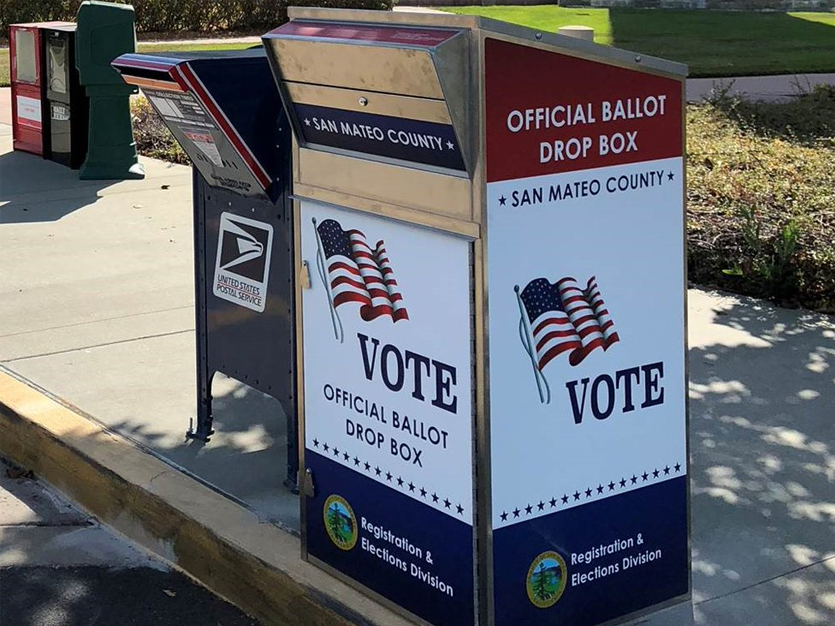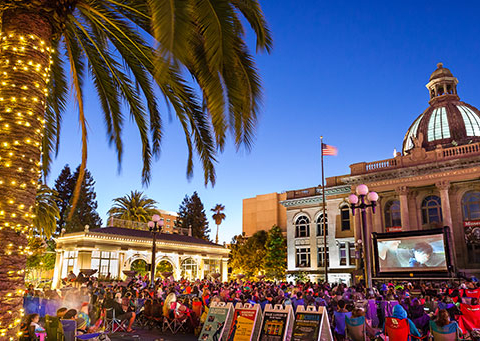Finally.
It took exactly three weeks for the San Mateo County Elections Office to count all the votes and provide a definitive answer to the eternal political question: Who were the winners and who were the losers?
Of course, here at Political Climate World Headquarters, we dig a little deeper, so this is our own assessment of who were the big political winners and losers from a mid-term election with an historic turnout.
And we have to start with the voters and Assemblyman Kevin Mullin (incidentally, my partner on the Peninsula TV show “The Game.”)
A BIG WIN FOR VOTERS: Voters turned out in tremendous numbers, 73 percent countywide. Four years ago, in the last equivalent statewide election, turnout in San Mateo County was 46.3 percent. Eight years ago, turnout was 65.3 percent.
By any measure, it was a landslide win for the county’s all-mail balloting, an experiment for which Mullin strongly advocated. Certainly, there were other factors that drove voters to participate, but all-mail balloting had to be the leading factor.
Yes, it took three weeks for final results to be counted and for us to know who won in the closest races. But even in elections that were all-precinct, all-machine, close races took three weeks to clear up.
Nonetheless, the slow count did undermine the public confidence in the Elections Office, under the leadership of Mark Church. If all-mail balloting is here to stay, more resources have to be dedicated to a swifter count.
REDWOOD CITY WINNERS: The biggest winner in the county’s hottest City Council race was Giselle Hale, a planning commissioner, who set records in fund-raising and total votes that are unlikely to be broken. She cleared the 12,000-vote threshold, an unprecedented amount of support. Hale clearly has emerged as the leading spokesperson for a new and influential group of voters – new families, often needing two incomes to live in the city, and whose professional background is in the tech industry.
Vice Mayor Diane Howard won re-election, despite highly vocal dissatisfaction about development that never seemed to attach to her. She demonstrated that there is still a place for someone who has been a fixture in the community and whose amiability has made her many friends and, seemingly, no enemies. Howard acknowledged this election signaled a changing of the guard.
And Diana Reddy will bring a whole different approach to serving on the Council. She is accustomed to being outside the chambers, speaking for those who she felt were often overlooked or dispossessed by the power structure. Now, she’s part of the power structure, but she is likely to bring a well-defined political perspective not often seen on the Council.
Her narrow win – she squeaked by Rick Hunter by less than 500 votes – is hardly a mandate. But she undoubtedly will bring a grassroots cadre of supporters to critical council issues and her influence on some key policies is likely to outweigh her victory margin.
For all of her commitment to the cause of social justice, Reddy is an experienced and pragmatic political veteran and she undoubtedly will find ways to work with her colleagues.
Hunter came so close. In another era, his combination of community, school and public service would have made him an easy winner. Nonetheless, he was widely liked for his earnest, gentlemanly manner and he was a unifying figure, drawing votes from all factions of the city’s politics.
The Council would be well advised to make use of Hunter’s mediating skills and wide support. Perhaps he can serve as a special ambassador-at-large, working behind the scenes to resolve the differences that marked this election. And he’d be the ideal person to chair a citizens’ commission on developing the new districts the City Council will soon consider.
The Council has to be at arm’s length from this process, lest it seem entirely political, and Hunter has a reputation that could mark the process as fair and unbiased.
Hunter said he probably won’t run again. The remaining three candidates – Christina Umhofer, Jason Galisatus and Ernie Schmidt – said they might, particularly in an election of districts. Expect to see them again.
A REDWOOD CITY LOSER: The California Apartment Association spent tens of thousands of dollars trying to defeat Reddy, and they failed. I can’t recall a special interest getting this involved in a city council race, and it was an extraordinary effort that came up just short.
Reddy said in a post-election interview that it was “hard to say” what the impact was of the CAA’s onslaught of eight dramatically negative mail pieces. It might have hurt her, she said, but it also energized her own supporters to work even harder.
Such negative campaigning also is a new phenomenon in local campaigns and it is quite likely that it generated its own voter backlash.
HOW BIG? How pronounced was the big turnout in Redwood City?
Councilman John Seybert sent along some interesting data. The percentages in the Council race are badly skewed by the fact that voters could cast ballots for three of the seven candidates.
So Seybert took the total vote for Measure DD, the measure to create a cannabis business license tax, which was 28,404, and, using that as the total number of voters in the city election, calculated that Hale got 44.7 percent of the total votes cast, Howard 41.9 percent, Reddy 39.8 percent and Hunter 38.6.
OTHER COUNCIL WINNERS: It was a big win for the slate of incumbents in Belmont – Charles Stone, Warren Lieberman and Julia Mates – who easily brushed aside the lone challenger representing the old and out-of-power guard of that once-contentious city.
In South San Francisco, the big loser was one-term incumbent Pradeep Gupta, who lost to newcomer Flor Nicolas. The big winner there, however, was Karyl Matsumoto, who singlehandedly recruited Nicolas to take on Gupta. Matsumoto, who has been deciding not to seek re-election for at least a decade, remains a formidable power in the North County.
In Daly City, incumbent Ray Buenaventura pushed through his own slate, including Pamela DiGiovanni and Rod Daus-Magbual.
WINNING IN DISTRICTS: The results in Menlo Park, where district elections were held for the first time, undoubtedly sent a ripple of apprehension through every other city that is going to have to move away from citywide elections for this simple reason: Incumbents Kirsten Keith and Peter Ohtaki both lost.
Based on that small sample, it appears money has substantially less impact in a district-level election. In Menlo Park, the districts were small enough that a candidate can knock on virtually every door. Not every city is going to have districts that small. Still, it’s a signal to other incumbents in other cities.
MAYBE THE BIGGEST WINNER: There may be no bigger winner in this election than Rosanne Foust, the president and CEO of the San Mateo County Economic Association, who singlehandedly raised more than half the $1.1 million that was spent to pass Measure W, the half-cent sales tax increase that will fund badly needed transit and transportation projects in the county.
Since she took over Samceda, Foust has worked tirelessly to remake the group into a regional player and this election proved that she is making great strides. This matters not just for Samceda, but because San Mateo County frequently is overlooked in the play of regional politics. She is doing more than anyone to assert that the county must be given its due.
The win for Measure W came despite several prominent political “leaders” who stayed off the measure, largely because of behind-the-scenes interplay by other regional organizations.
A WIN FOR MOVING FORWARD: Measure W slipped across the two-thirds finish line in the final slug of votes processed by the Elections staff. It’s an example of an endorsement for the progress that has marked the county in the past decades and, by and large, in the Nov. 6 election.
Measure W was a do-or-die moment for transit officials, who need to reinvent the county’s transit and transportation programs to meet the needs of a county choking on traffic. Of course, now they have to deliver and that presents an interesting challenge. Transit projects take years to produce, but the expectation is for some relatively immediate relief.
That’s just one example. Growth is taking place in Redwood City, San Carlos, Belmont and South City and voters essentially endorsed changes that are remaking those communities. In Brisbane, a remarkable 55 percent approved a massive bayside project that will triple the size of that city.
And in Redwood City, a sales tax increase passed easily, suggesting that there is widespread confidence in the direction of the city.
Change is here to stay. And while most of the noise comes from those unhappy with the changes, it is clear the great majority of voters in this election are comfortable with the way the Peninsula is evolving.
HERE’S ANOTHER SIGN: Voters also passed all but one of the fiscal measures on the ballot in San Mateo County. There were five hotel tax increases, five cannabis business license taxes, four other city fiscal measures and five school fiscal measures – a total of 19 in all. The only loss was the Millbrae bond measure to rebuild the community center destroyed by fire. It needed two-thirds, and fell well short.
PENINSULA WOMEN WIN BIG: The national trend of electing record numbers of women was replicated in the county. There were 54 school board and city council seats on the ballot and 35 of them were won by women, 65 percent. On school boards, often a launching pad for higher office, there were 23 seats on the ballot and women won 15 of them, 70 percent.
Contact Mark Simon at mark.simon24@yahoo.com.
*The opinions expressed in this column are the author’s own and do not necessarily reflect the views of Climate Online.






